The Porsche 959 bodyshell
I am aware of my limits at painting and this is the reason why I chose to entrust the whole painting and decoration to my friend Teamneogordini. Even the bodyshell being a repro, I want it boxart and as close to perfection as possible: this is the challenge he accepted.
A little note about this bodyshell reproduction quality: the lexan is a little bit thicker than Tamiya's original which makes the body less fragile. The counterpart is that details are less sharply molded, but this is hard to detect. However, dimensions are not exactly the same as the original's: you can notice this when applying original stickers and guess that the original bodyshell must be a few millimeters longer since you need to slightly recut some decoration elements.
Teamneogordini chose to start with the cockpit set:
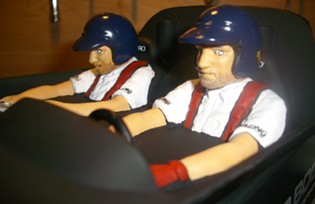
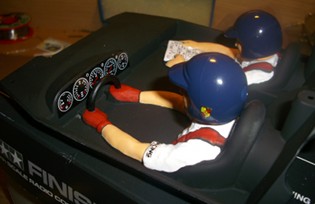
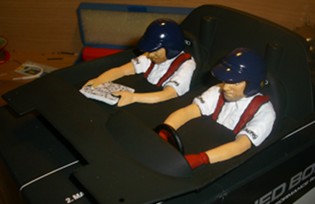

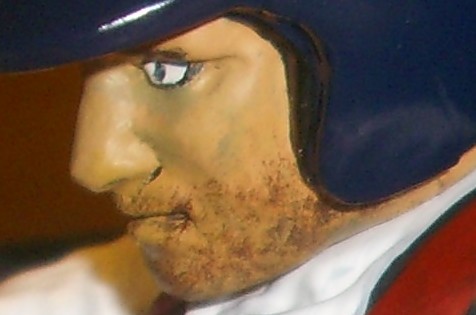
Before to shoot these photos, there are hours spent painting and an obvious talent. The level of details is tremendous: this is both far beyond anything I could have done and far beyond my expectations.
The cockpit set was just the starter: it is very important for a realistic model, but know it's time to start with the body itself. Now you saw the very high detail standard Teamneogordini can perform, let's see what he did with the body.
First mask for motor grille and windows
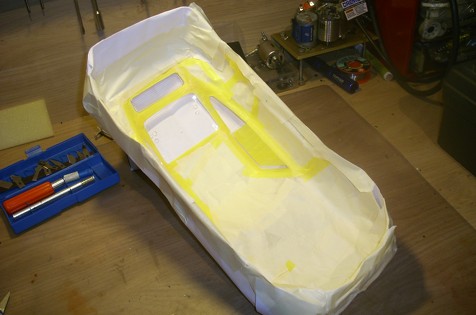
Additional elements are painted and first stickers applied
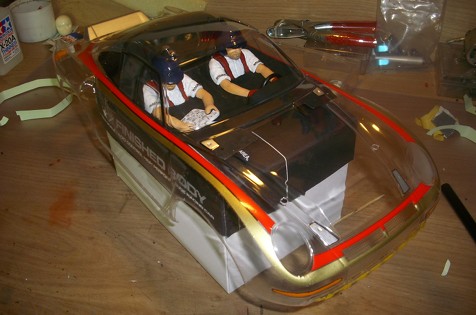
Masking is very important, tricky and painful to perform on this bodyshell: you need several hours only to get what is shown on the first photo. And this is only to paint the rear wing in silver, mask it and paint the motor grille, rear windows and front windows outlines in black. The second photo shows the end of this first painting operation and the two sticker lines that will guide you for separating the two next colors.
As I previously mentioned it, this bodyshell is not precisely respectful of the original's dimensions: on the above photo, the red and gold stripes needed to be cut to fit. This was another challenge Teamneogordini had to face, and this won't be the last.
Applying stickers is very tricky due to the bodyshell curves: using a hair-dryer is required in order for the stickers to perfectly adjust. Despite of this technique, you can notice folds that will progressively show up a few hours later: this is a flaw you can find on every photo you can find on internet.
Masking before spraying the blue color
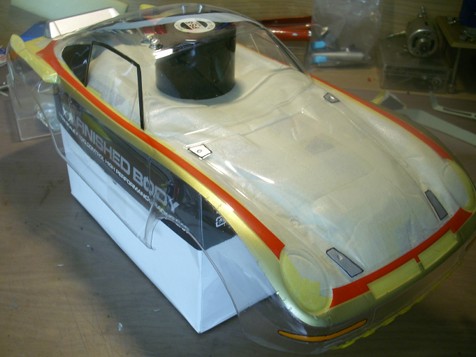
Inside view
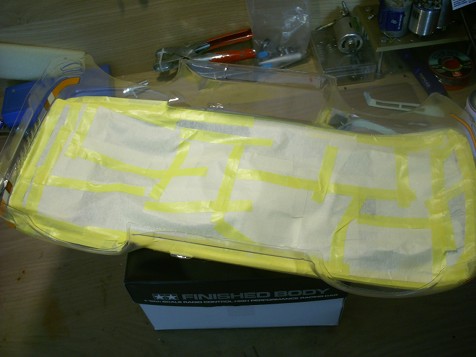
Close-up on masking: seen from the inside
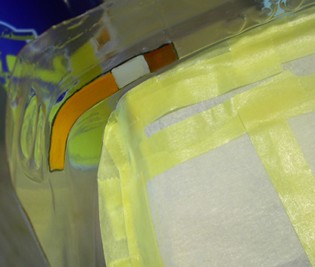
Such a shapely butt
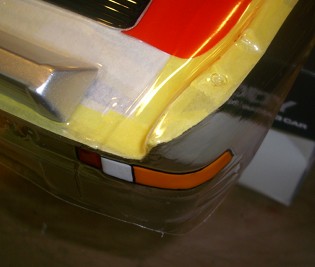
Just for pleasure, the other side
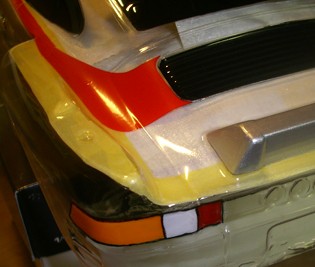
Here is the result after intensive masking and painting sessions: the bodyshell is now almsot finished, at least for the main painting operations. Despite of all the provided care, there are a few paint overrides (like the blinker on the first photo): everything will be corrected later on by painting from the outside.
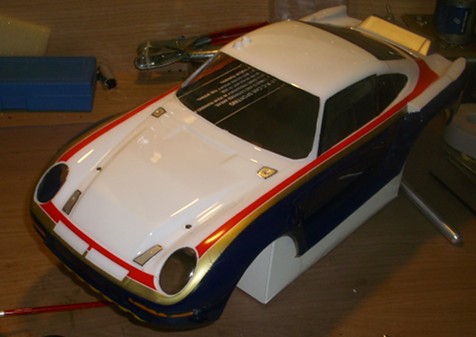
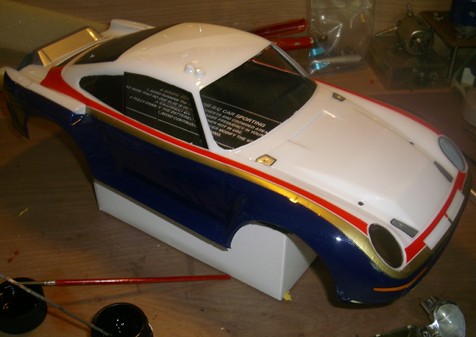
This is not finished... and again, original dimensions are not fully respected. This is pretty obvious when considering the rear wing that doesn't adjust precisely with the bodyshell:
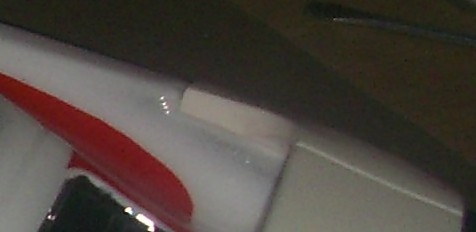
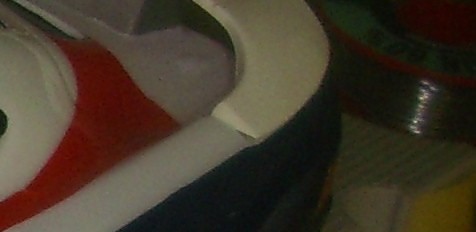
After softening the adjustement default
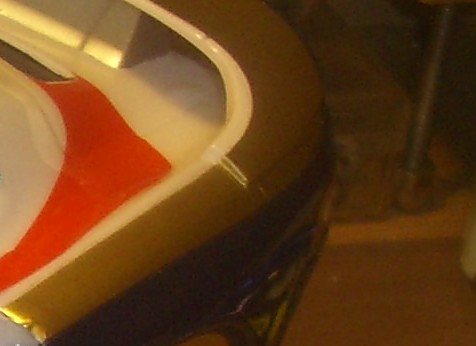
Overview
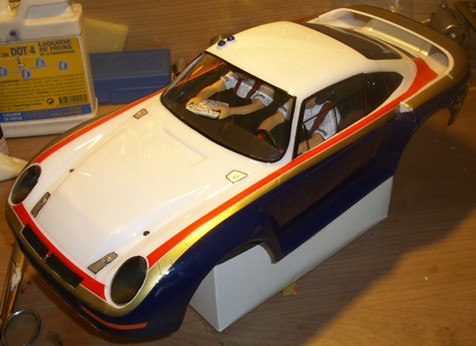
Several months of work later, here's the bodyshell when leaving my friend Teamneogordini's magical workshop:
Totally painted and decorated
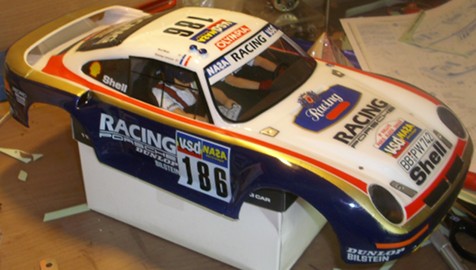
Front view
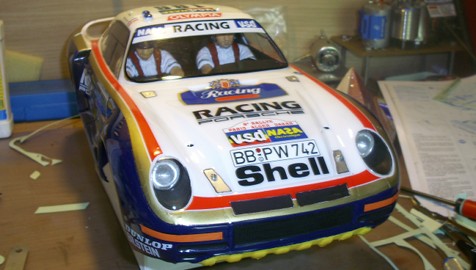
Awesome Porsche butt!
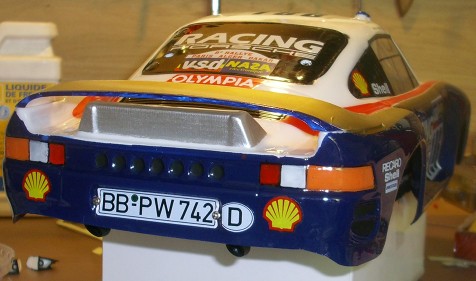
See the level of details?
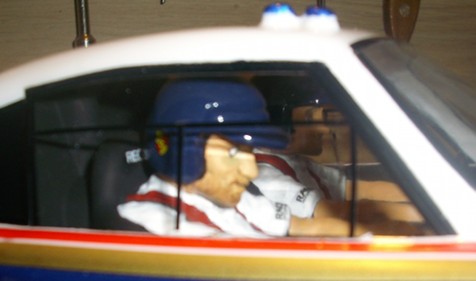
I must confess I had never expected this bodyshell to be so difficult to make: yet, I had read a lot about it, but I thought I could deal with it. Hopefully, I want such a perfect result that I chose to trust Teamneogordini's talent: I think it's the best decision I made, even if he really hated me for that ![]() . In fact, the truth is I could never have achieved such a masterpiece. This is because of Teamneogordini, his talent and friendship that I now have the chance to own such a beautiful model: a warm thank you and congratulations my friend.
. In fact, the truth is I could never have achieved such a masterpiece. This is because of Teamneogordini, his talent and friendship that I now have the chance to own such a beautiful model: a warm thank you and congratulations my friend.
The beauty of this boddyshell pairs with its extreme fragility: even if the lexan is thicker that the original, it is still very fragile and this undoubtely explains why Tamiya's original bodyshell is so rare.
Nevertheless, this pure beauty deserves better than being exposed on a shelf: it is on its way to meet its chassis which is another piece of art, and this model will run.
First run with the Porsche 959
This model was a dilemna for me since I always consider that an RC model should run since it was designed for that. If it's meant to stay on a shelf, static models are better candidates since they provide even more scale details. Moreover, when a model was designed to run off-road, it's a pain to drive it on asphalt: so at the beginning, I planned to drive my Porsche 959 on gravel and sand since it is the replica of the 1986 Paris-Dakar winner.
On the other hand, this model is very special: the chassis is extremely fragile as well as the bodyshell. Last, despite of my friend Teamneogordini's talent, some stickers foil: dust will undoutely get in and damage the fragile stickers. This is the reason why I decided to run this model only on asphalt in order to preserve it. Tamiya even thought about this when they released the slick tire set option for this model and I'm the lucky owner of one full set. The bad news is that the slick tires outer diameter is smaller that the off-road set as you can see on the following photos:
Rally tire set on
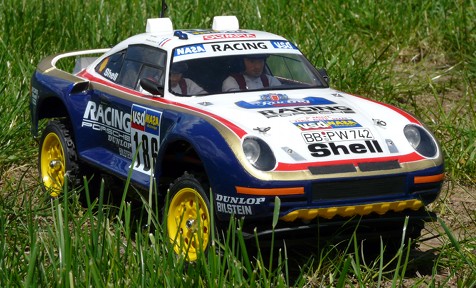
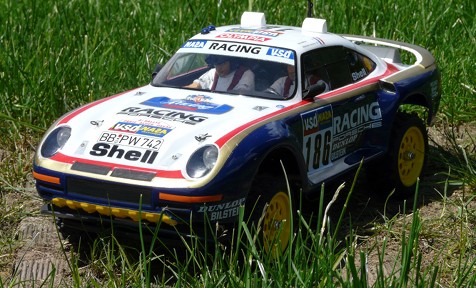
Optional slick set on
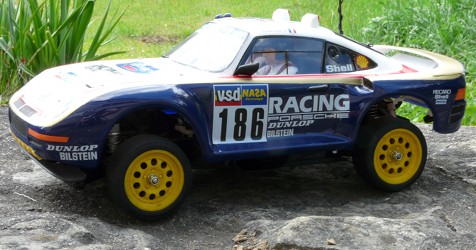
Unknown 1/10th wheel set
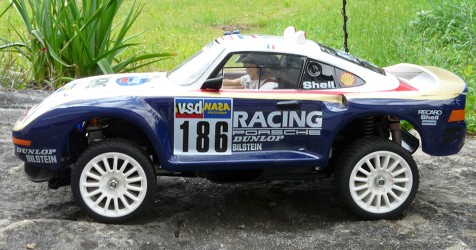
This is the reason why I chose to run it with another set of slick wheels that come from an unknown 1/10th model. Those wheels are not specifically nice looking and they are far from the original design, but their outer diameter is the same than the original rally set.
About driving this model, I drove very carefully to take no risks: the general sensation is that the RX-540VZ Technigold motor is powerful and the chassis is quick and precise. But the model gives the bad sensation that it can easily flip since the chassis is pretty narrow (165mm) compared to its height (140mm): of course, I didn't try to check of this model is really affected by this problem.
Driving such a model is a mix between excitement and worry: to preserve it, you need to concentrate and always keep in mind that the slightest mistake could be dramatic. This is also the feeling shared by my friend Teamneogordini when he drove it: after a few track laps, the concentration effort gets superior to the pleasure of driving the model and it's time to stop. Driving a Porsche 959 preserving both the mechanics and the bodyshell remains a true moment of excitement and a chance: but drivers have their limits and it's better to have breaks than to drain the full pack at once.




